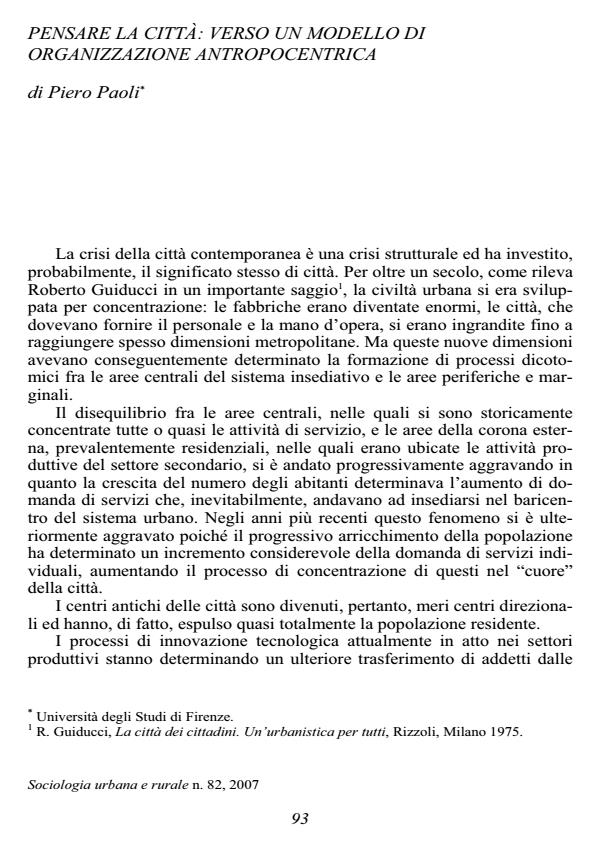Pensare la città: verso un modello di organizzazione antropocentrica
Titolo Rivista SOCIOLOGIA URBANA E RURALE
Autori/Curatori Piero Paoli
Anno di pubblicazione 2007 Fascicolo 2007/82 Lingua Italiano
Numero pagine 7 P. 93-99 Dimensione file 39 KB
DOI
Il DOI è il codice a barre della proprietà intellettuale: per saperne di più
clicca qui
Qui sotto puoi vedere in anteprima la prima pagina di questo articolo.
Se questo articolo ti interessa, lo puoi acquistare (e scaricare in formato pdf) seguendo le facili indicazioni per acquistare il download credit. Acquista Download Credits per scaricare questo Articolo in formato PDF

FrancoAngeli è membro della Publishers International Linking Association, Inc (PILA)associazione indipendente e non profit per facilitare (attraverso i servizi tecnologici implementati da CrossRef.org) l’accesso degli studiosi ai contenuti digitali nelle pubblicazioni professionali e scientifiche
In the city, a gap between central and peripheral areas has always been present: basically, in the former were concentrated service industries, and in the latter residential and industrial activities. With the city growth, the gap increased: more request for services produced a higher density in the core of the city. This paper stresses the need for a new model of urban organization, in order to overcome the core-periphery dichotomy; this new model could be based on community, and its relation with physical space and its activities. So, some intervention steps must be planned to weigh on the whole population. Re-organizing the city, the creation of integrated areas seems the best solution; so, not only industry service or executive activities, but also other ones that are the essence of city (commerce, culture, recreation, etc.). Such activities could integrate the vocations of urban context; in this way, a fermentative reaction and a new urban quality are possible.;
Piero Paoli, Pensare la città: verso un modello di organizzazione antropocentrica in "SOCIOLOGIA URBANA E RURALE" 82/2007, pp 93-99, DOI: